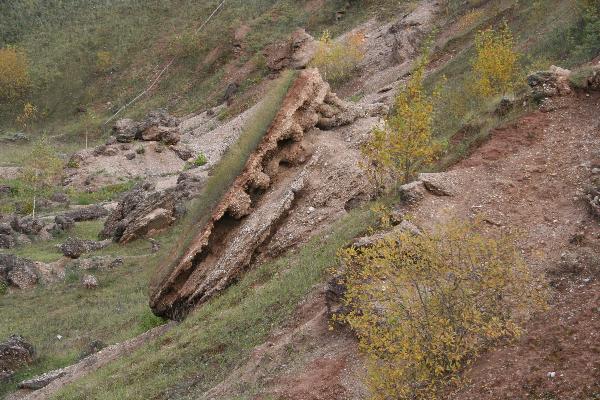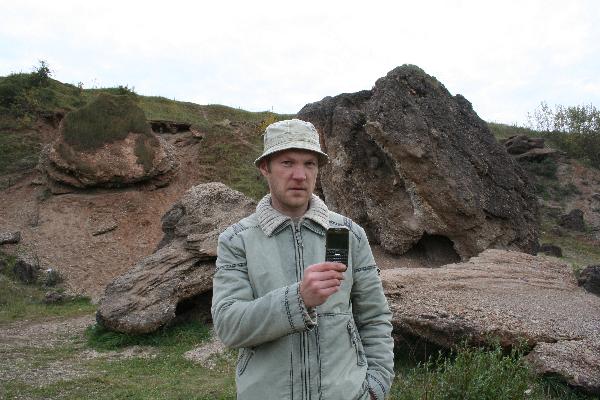The Seimyniskiai Sedimentary Rock and Conglomerate
WHAT IS IT AND WHERE IS IT FORMED
Conglomerate is a rock that has pieces of other rocks glued together to form one larger chunk. It is a sedimentary rock that can be found along beaches, rivers, and glaciers where water or ice drops them off. It is made up of pebbles and other small rocks that are a quarter of an inch around or bigger. The pebbles can be made of quartz, or some other mineral. It is glued together with iron oxide, calcium carbonate, or silica. It looks lumpy with bigger rocks cemented with small gravel and sand.
SEDIMENTARY ROCK AND CONGLOMERATE
This conglomerate developed due to complex hydro chemical processes taking place in subterranean area and resulting in calcite crystallization within the layers of gravel. When a flew of underground water, in which calcium bicarbonate is dissolved, reaches a porous layer of gravel with high hydraulic permeability, the hydrostatic pressure falls giving rise to the crystallization of calcite that firmly cements together the sediments of sand, gravel and pebbles.

Exposure of „Konglomerato Uolos” is a natural monument (proclaimed in 1999). The formation with its peculiar contours is composed of deposited and cemented together sediments sand, gravel, pebbles and boulders, borne by water flows from melting glaciers.

In this picture you can see how a lot of rocks are conglomerate into the one foundation:

HISTORY OF SEIMYNISKAI MOUND
The Seimyniskiai mound, on which, according to historians, in the 13th century Uzpaliai castle was built is one of the most impressive castle mounds in Lithuania. The mound with steep slopes and a level pitch 90 m long by 45 m across on the top, rises high above the picturesque valley where the rivulets of Pilupis and Pilius (Lithuanian names meaning „rivulets beside a castle”) flow together. The south eastern side of the mound is surrounded by the defensive ditch 120m long, 50 m wide and 30 m deep. Nearby, across the ditch, there is another quite big hill the place of ancient settlement where artefacts of wheeled pottery and rough ceramics were discovered.
The settlement of Uzpaliai is first mentioned in the Sela Deed of Donation issued by Mindaugas, the King of Lithuania, in 1261 where boundaries of the Seliai lands donated to the Livonian Order built Daugavpils fortress as a basis for launching military offensives deep into the Lithuanian land. With the aim of defending the northern borders of Lithuania against the onslaughts from the Sword bearers occupying the territory along the Daugava river, the barrier consisting of numerous fortresses, stretching from Narutis Lake towards Birzai, was erected. The Uzpaliai castle strategically was considered as the most important constituent of that chain of fortresses, therefore special attention was paid to its fortification and up till 17th century the castle retained a military commander and held a garrison of a fortress. In 1433 the castle was burnt down by the Livonian Order, buti n a short time it was rebuilt.
HOW TO REGISTER THIS EARTHCACHE
To register this Earthcache as found you must do three following steps:
1) Take a picture of you and your GPS at the given coordinates and be sure that your picture will be the same as the example which you can see below and is included four largest conglomerate rocks and you at given coordinates:

2) Please measure the perimeter of the nearest largest conglomerate rock which you can see in this picture:

3) Send the answer by e-mail through this website with calculated perimeter to the owner of this cache and when you will receive the confirmation, you will be able to register this Earthcache. Any other founds of this cache will be deleted by owner.
Please do not climb on the formated rocks and do not destroy them. This formation is an object of natural heritage and preserved by State.
GOOD LUCK!

